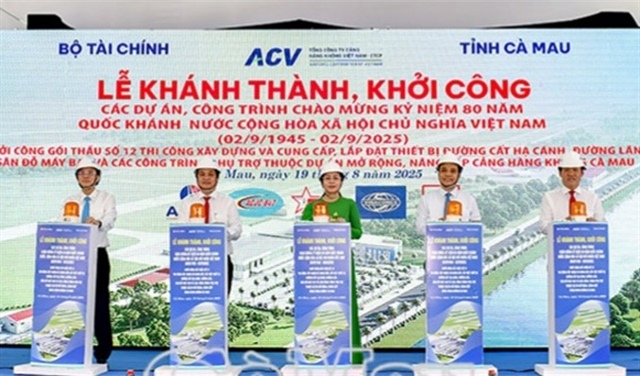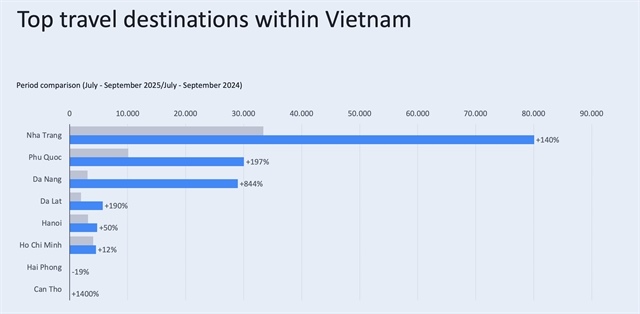Removing bottlenecks in nation’s FDI attraction
Removing bottlenecks in nation’s FDI attraction
Vietnam is doing its best to improve its business climate to attract more foreign direct investment. Lindsey Ice, economist at FocusEconomics which provides in-depth economic analysis globally, writes about what the country should do to lure in more of this type of funding amidst the dawn of Industry 4.0 and new free trade agreements, including the Comprehensive and Progressive Agreement for Trans-Pacific Partnership taking effect.

Over the last three decades, Vietnam has transformed from one of the poorest countries in the world to a dynamic market economy enjoying strong economic growth. This is largely thanks to the liberalisation of the Vietnamese economy, and the doi moi market-oriented policy reforms that began in the late 1980s that started opening the country to investment and trade.
Nowadays, the Vietnamese government continues to show strong commitment to creating a more business-friendly environment, a vibrant investment climate, and spur foreign trade. The latter is evident in its high participation rate in free trade agreements (FTAs).
As Vietnam continues to further integrate into global supply chains and move into new trading markets, thanks in significant part to those FTAs, it will need to sustain progress on improving the business climate to fully reap the benefits of these opportunities.
As part of the government’s vision to propel the Vietnamese economy forward, policymakers have begun to push initiatives centred around taking advantage of the Fourth Industrial Revolution. This refers to the rapid development of disruptive and highly sophisticated technologies such as artificial intelligence, robotics, and 5G networks that are transforming social, economic, and political landscapes around the globe.
This wave of technology is expected to revolutionise economies and labour markets. Governments are scrambling to promote policies that encourage innovation and the development of infrastructure needed to foster Industry 4.0.
The term first gained attention in Vietnam in 2016 following the World Economic Forum’s annual meeting entitled “Mastering the Fourth Industrial Revolution.” Since then, Vietnamese policymakers have put greater emphasis on maximising opportunities from Industry 4.0.
In fact, last year the Central Institute for Economic Management rolled out a strategy with targets and action plans for different ministries and sectors. As Vietnam has already begun its own technological transformation from a chiefly agricultural economy into a manufacturing hub, and with a young population – 70 per cent of the population is currently under 35 years of age – the country is well suited to profit from such a revolution and is poised to adapt quickly to rapid technological changes.
Furthermore, the potential for Vietnam to be a destination for diverted supply chains that have been impacted by the protracted US-China trade row represents another way in which the country is well positioned to capitalise on Industry 4.0. Nevertheless, while offering a wealth of opportunities in Vietnam, Industry 4.0 could also bring costs if the country fails to foster a business climate that encourages innovation and change and thus lags behind in the technological race.
REMOVING OBSTRUCTIONS
A strong business climate is imperative if Vietnam is to take advantage of the opportunities provided by Industry 4.0 and further global integration through FTAs. While the country has made significant progress in creating a more business-friendly environment since the birth of doi moi, there are still several major barriers that are inhibiting foreign direct investment (FDI) and stunting the domestic private sector.
First, the red tape associated with administrative procedures represents an important hindrance for many businesses, foreign and domestic alike. Preferential treatment for state-owned enterprises (SOEs) is another major impediment. Finally, despite significant improvement, inadequate physical and technological infrastructure needs to be addressed.
A complicated network of administrative systems creates a burden which can make it difficult for businesses to register, pay taxes, and perform other administrative tasks.
Moreover, businesses often have to deal with multiple agencies that may lack cohesion in policy procedures. Many firms have reported a large number of regulatory inspections. Although the government has taken concrete steps to streamline procedures and strengthen institutional frameworks, continued progress will need to be made in order to further boost FDI and new business registrations. Public policy focused on easing the costs of doing business is essential for promoting a more business-friendly environment.
Reports suggest that businesses choose to avoid the Vietnamese court system due to concerns about bribery, and their belief that the courts are neither independent institutions nor efficient in settling disputes.
Companies interested in investing in Vietnam also have to assess their exposure to corruption risks, which could deter businesses from setting up shop or partaking in more complex forms of FDI, such as mergers and acquisitions (M&A).
A crucial step in boosting the business climate will be for the government to level the playing field for the private sector. While the government has prioritised the equitisation of SOEs, in 2018 it failed to reach its target of at least 85 businesses.
Finally, insufficient infrastructure remains another key shortcoming in creating a more flourishing business climate. Although Vietnam’s infrastructure has improved significantly over the last several decades, energy, transport, and communications infrastructure remain weak. Transportation infrastructure projects need to focus on the best ways to connect growing industrial sectors and relieve transport bottlenecks and traffic jams. Moreover, efforts need to focus on bolstering electricity infrastructure and diversifying energy sources away from an overreliance on just hydropower.
Communications and IT infrastructure needs to be improved, especially since the majority of small- and medium-d enterprises still have limited access to new technologies. Public-private partnerships could be one method of building infrastructure, while experienced private companies could be pivotal in integrating technology and training employees in new technologies.
HEADING FORWARDS
Beyond what is at stake in the Fourth Industrial Revolution, Vietnam has plenty of other reasons to continue cultivating a stronger business climate. For one, Vietnam is a highly trade-reliant economy, which makes it more susceptible to a global economic slowdown. In addition, downturns in the tech sector could also drag on economic growth, given the importance of semiconductors and electronic parts exports.
Diversifying the economy as well as sources of FDI will be critical for the country to boost its long-term growth potential. South Korea’s Samsung is currently the largest single foreign investor in the country and accounts for more than one fifth of total exports, reflecting the country’s overreliance on the electronics industry to buoy growth.
Second, Vietnam’s participation in global value chains is dominated by foreign-invested enterprises, while domestic businesses are hardly integrated at all. The integration of domestic private small- and medium-d enterprises into global value chains will be imperative to sustaining economic growth and avoiding the middle-income trap.
In short, Vietnam is a success story for how an economy can quickly change if business-friendly and market-orientated reforms are implemented. The country has become a hotspot for FDI and its high participation in FTAs has strengthened its trade relationships and opened up new export markets.
While a lot of progress has been made, there is still some way to go – particularly relating to an unequal playing field favouring SOEs and poor infrastructure. Addressing these shortcomings would boost business activity and FDI, and ensure that Vietnam benefits from the arrival of Industry 4.0.






















